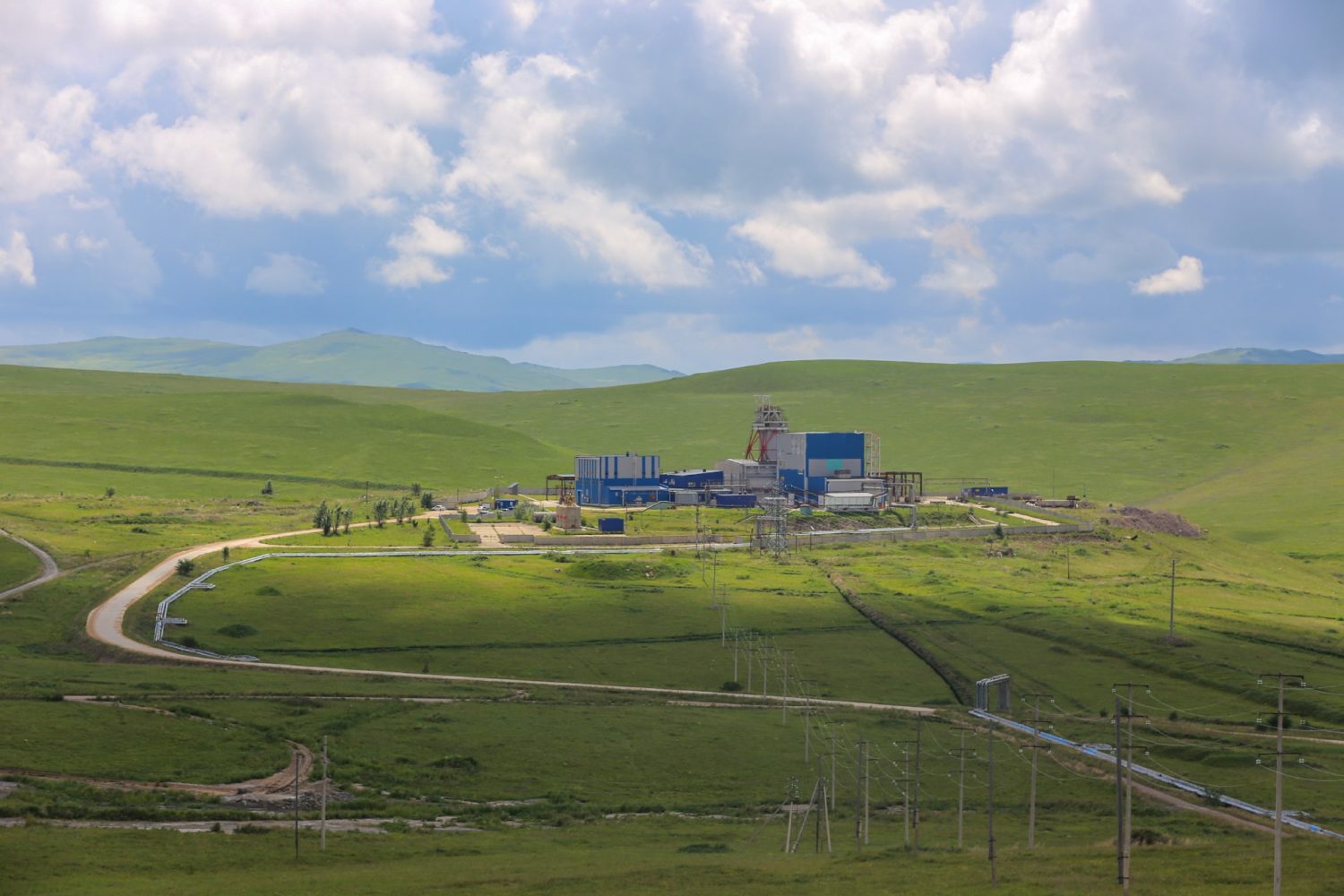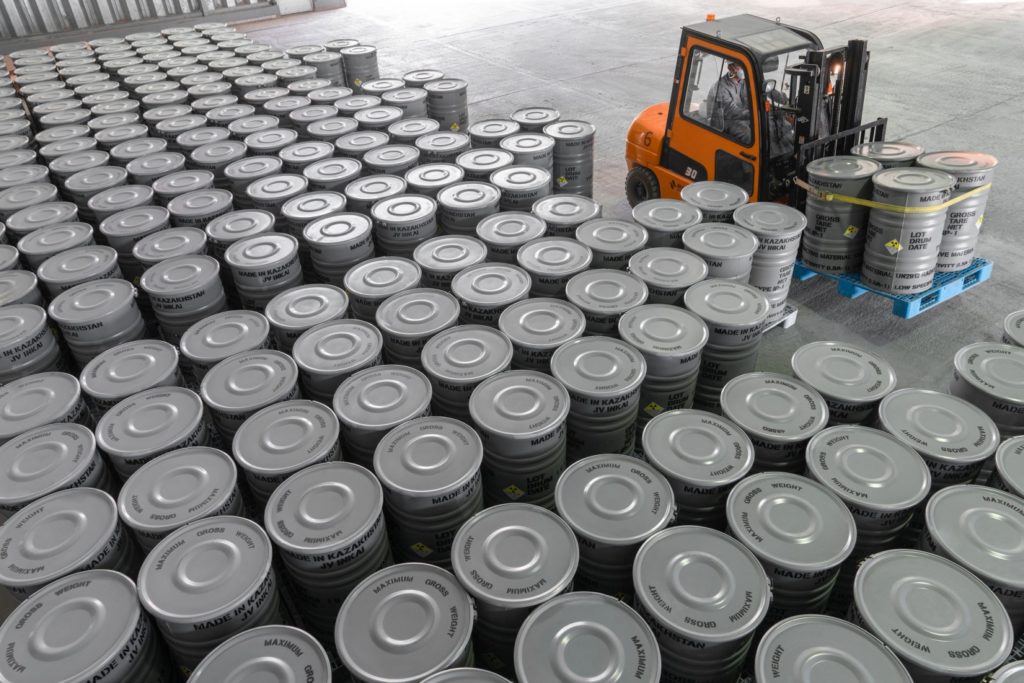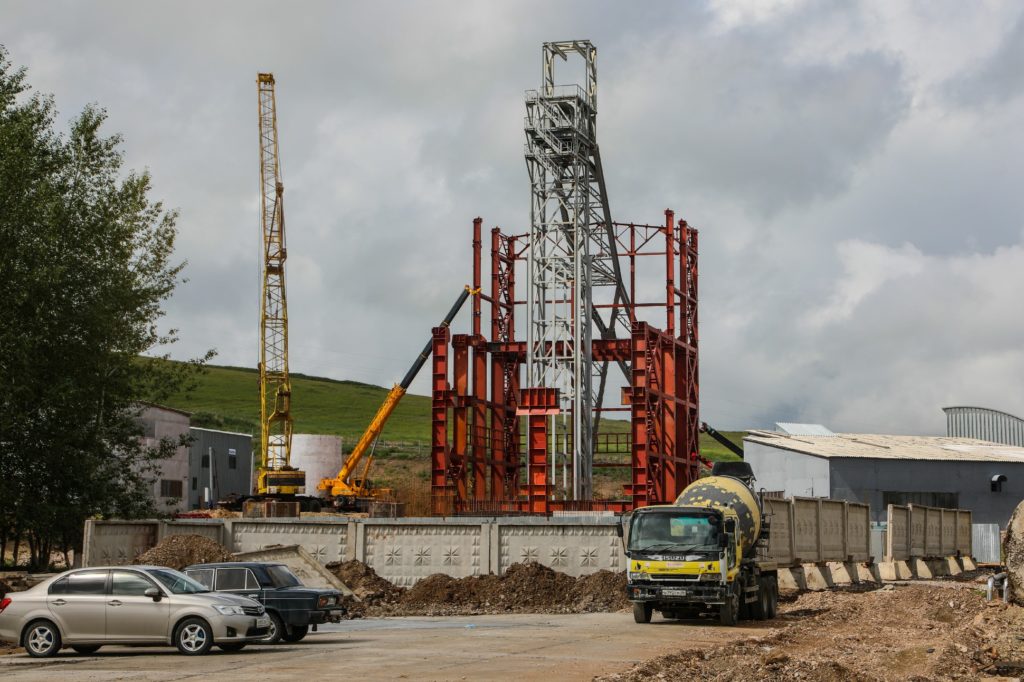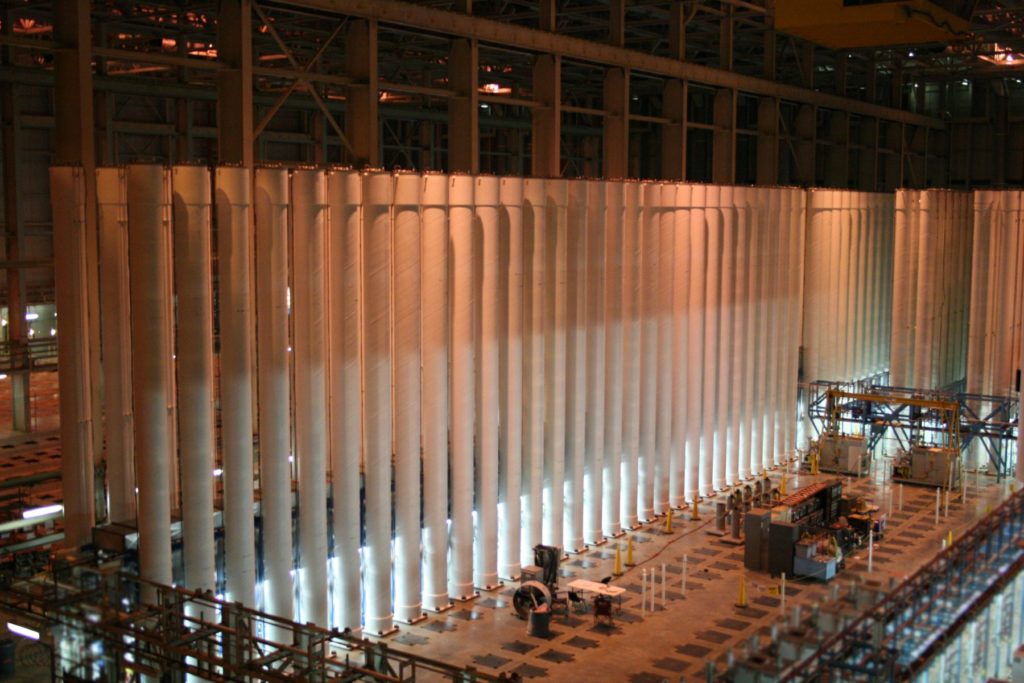
Coming Up Short Without Rosatom
back to contentsThe main trend gaining momentum in the nuclear fuel market is the intention to increase output on the back of political fragmentation of the global economic landscape. This trend is manifested both in natural uranium mining and uranium enrichment. However, the intended increase in uranium output is halting and dragging due to shortages. Against this background, Rosatom is increasing uranium production and taking a strong position in supplying nuclear fuel products.
Uranium market
One of the trends of the last six months is that uranium spot prices began to respond to the news about possible supply disruptions. In the past, even in the pandemic, mines could open and close but the market took almost no interest in it. Even the July 2023 embargo on Niger, the seventh-largest uranium supplier according to the WNA, did not shake up the market. The first reaction to the news about mining problems became apparent last autumn when Cameco said it was lowering its expectations about annual output. At that time, the price, which was below USD 60/lb per pound, passed the USD 70/lb mark and continued to rise.
The market shook for the second time this January when Kazatomprom, the world’s largest uranium producer, announced a shortage of sulfuric acid. The price then soared straight from USD 92/lb to USD 106/lb and has not fallen below USD 100/lb since then.
It should be remembered that sulfuric acid is the key chemical agent for the in-situ leaching method — it is injected into the soil to dissolve uranium, and the resulting solution is then brought to the surface and processed into a uranium concentrate. “Given the strong growth in domestic consumption of, and demand for, sulfuric acid for fertilizer production over the past few years, the domestic market is facing a shortage of sulfuric acid. Regional markets are also experiencing shortages due to the growing demand from agriculture and a combination of factors, such as supply chain disruptions and geopolitical uncertainties,” the company commented in its annual report for 2023.
The company planned to reach 90 % of its production target set out in the mineral licensing contracts for 2024, but the report says that “the uranium production at most mining operations will be 20 % below the target.” According to Kazatomprom estimates, the company’s 100 % output (that is, total production in Kazakhstan) will be 21,000 to 22,500 tonnes in absolute terms (vs. 21,110 tonnes in 2023), while its pro rata participation interest will be 10,900 to 11,900 tonnes (10,600–11,200 tonnes in 2023).
Kazatomprom and Cameco are among the world’s largest uranium producers, but they are not the only ones facing production problems. For example, production remains low and unstable at the mining operations in the United States.
According to the EIA, uranium production at all US mines tumbled from 27,000 pounds in Q3 2023 to 12,650 pounds in Q4 2023. The largest decline in production was recorded at the Smith Ranch-Highland Operation (from 10,830 to 2,980 lbs) and the Lost Creek Project (from 15,760 to 6,520 lbs). Meanwhile, enCore Energy announced the start of uranium production at its Rosita Project in South Texas, and Energy Fuels began to produce uranium at its Arizona and Utah operations. However, data from these mines were not included into the EIA report for Q4 2023, so we can assume that the output is, at best, too insignificant yet to make it into the statistics.
France’s Orano resumed uranium concentrate production at its Arlit mine in Niger in February 2024. It should be recalled the operations were suspended there in September 2024 due to a shortage of consumables after the borders were closed by the neighboring countries, primarily Benin, through which supplies flowed to Niger. In late December 2023, transit through Benin resumed after its main port, Cotonou, had seen its revenues plummet. Orano noted that the recovery of operations was very slow.

France has also resumed the production and use of nuclear fuel made from regenerated uranium after a 10‑year break. This resumption solves two issues: it reduces the amount of regenerated uranium in stock (and, consequently, its storage costs) and minimizes the amount of natural uranium required to make new portions of fuel, which might be an indication of uranium shortage and the desire to overcome it.
One can say, therefore, it is far from easy to increase the output in response to surging demand, triggered by the desire of natural uranium buyers to secure physical deliveries and reduce the impact of spot prices on the final contract price. There is also a shortage of personnel who had to be laid off during the ‘lean years’, when uranium mining companies had to cut back and, in some cases, shut down production. It is not easy to find new qualified employees. There is a shortage of chemicals and components. These problems, of course, are gradually being solved but the process is slow. As practice shows, it takes at least a quarter of a year to resolve difficulties.
In Russia, all the difficulties are resolved routinely due to the absence of demand fluctuations. The year 2023 was successful for Rosatom in uranium mining as the company exceeded its target by 3 %. There is no shortage of sulfuric acid at Khiagda and Dalur, two in-situ leaching uranium operations of Rosatom’s mining division.
The key goals for the current year are to continue the construction of Mine No. 6 scheduled for commissioning in 2025, which is the key asset of the Priargunsky Industrial Mining and Chemical Union (PIMCU, part of Rosatom), to begin development of the Namaruskoye deposit (Khiagda), and to obtain exploration and production licenses for the Tetrakhskoye (Khiagda) and Shirondukuyskoye (PIMCU) deposits. Another goal is to prepare engineering design documents and cost estimates for the launch of operations at the Elkon gold and uranium deposit. The Elkon uranium ore district is regarded to be the world’s largest in terms of reserves, but it has not been considered for mining before due to low prices and demand, poor infrastructure and remote location. Economic and political circumstances have changed, though, to reconsider development plans.

Fuel market
In the nuclear fuel segment, some governments continue to take actions, attempting to complicate Russia’s access to international markets and expand their own limited capacity. The United States is the most active in these efforts.
In late December 2023, the U. S. House of Representatives passed a bill banning Russian imports of enriched uranium products from 2028. If the bill is enacted, it will come into force in 90 days and remain in effect until the end of 2040. However, the bill has a loophole: if there are no other sources of uranium than Russia, the U. S. Department of Energy may, in consultation with the Secretary of State and the Secretary of the Treasury, issue an import permit.
A little earlier, also in December 2023, the National Defense Authorization Act came into effect to provide for USD 886 billion in defense spending. It also requires the National Nuclear Security Administration to submit a plan for building uranium enrichment capacity in the country.

The United States is focusing much of its attention on building local capacity for the production of high-assay low-enriched uranium (HALEU, uranium enriched to 5–20 % of the U‑235 isotope). This January, the U. S. Department of Energy issued a request for proposals for HALEU enrichment services.
In late December, the U. S. Nuclear Regulatory Commission (NRC) amended terms of the operating license for the plant in Wilmington operated by Global Nuclear Fuel — Americas (GNF-A). The amendment authorizes the plant to produce uranium enriched up to 8 % (the previous enrichment limit was 5 %). The NRC also issued GNF-A a certificate of compliance allowing the company to ship nuclear fuel containing uranium enriched up to 8 % in its RAJ-II transportation packages.
It is not that simple, though, to obtain higher enriched fuel in practice. The shortage of 5B cylinders has been a stumbling block to HALEU production by Centrus (formerly ill-fated USEC). The company signed a contract with the U. S. Department of Energy for the production of 900 kilograms of HALEU in the form of uranium hexafluoride in Phase 2 (through November 2024). Under the contract, the Department is responsible for providing the HALEU storage cylinders to collect the output of the cascade. They have provided a few cylinders for Centrus to get started with production and they have ordered more, but the Department has experienced supply chain delays. “The centrifuges will continue to operate, but the quantity of HALEU we are able to withdraw from the cascade in Phase 2 is limited by the number of cylinders the Department can provide and will be less than 900 kilograms,” Centrus CEO Amir Vexler said in a conference call on the company’s performance in Q4 2023.
The United Kingdom also intends to establish its own HALEU production. The government plans to invest GBP 300 million in launching HALEU capacity.
It should be remembered, though, that Rosatom is so far the only commercial supplier of HALEU. Moreover, the facts show that it is extremely difficult to do without Russian-made nuclear fuel components at different production stages.
The American Honeywell has applied for an export license to supply 8,500 tonnes of natural uranium to Russia for enrichment until 2028. Urenco Nederland B. V. has obtained a transportation permit for enriched uranium hexafluoride supplied to the company until February 2027. Finally, the operators of Europe-based nuclear power plants with VVER‑440 reactors are in no hurry to give up Russian fuel, although they are working to diversify supplies.
IAEA Director General Rafael Grossi also spoke about the high importance of Russian supplies for the global nuclear fuel market in an interview with Reuters: “Many companies in the West depend on Russian supplies — enriched uranium or fuel… The consensus is sanctioning Rosatom would not be realistic and it’s impractical. It would put the nuclear industry at a standstill in many countries.”
According to him, reducing dependence on Russia’s nuclear sector would cost Europe billions. He saw no immediate shift away. The larger issue was infrastructure and incentives, and projections of rising uranium demand globally. “Frankly, I see an increased presence of Russian uranium enrichment capabilities in the world rather than a decrease,” the IAEA chief concluded.




